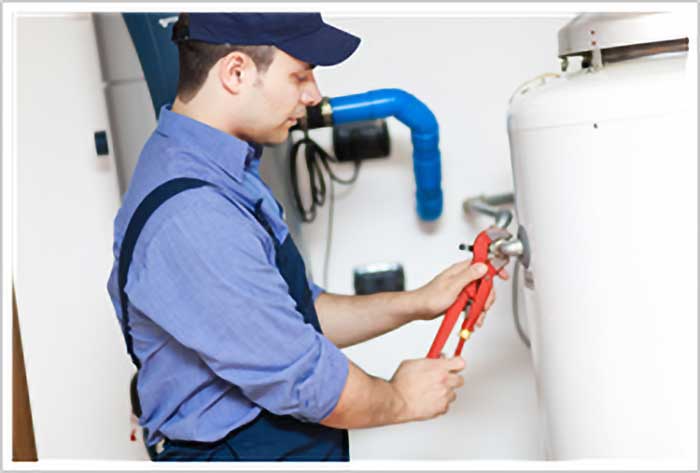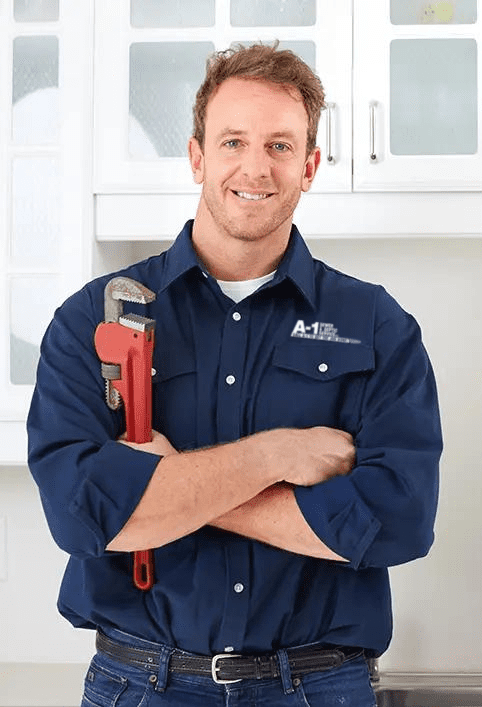There can be many causes when you have hot water heater problems, and one of those is the pilot light for your gas water heater. If your water heater pilot will not remain lit, then the thermocouple is probably at fault and it’s time to get a thermocouple replacement , as there is no fixing a broken thermocouple; it has to be replaced. Fortunately, the new part should only cost you five or ten bucks, and as a home improvement project there are only six simple steps on how to install it yourself, if you know your way around the water heater.
What is the thermocouple exactly? This little thermoelectric device is there to turn off the gas when the pilot flame turns off. The thermocouple tip is a stub of thermocouple tube that goes from the pilot to the gas controller, and at the pilot end, both the pilot and thermocouple are attached to a bracket that fastens to the burner assembly. It controls the gas flow to the igniter by ensuring there is heat present from the standing pilot light. If there is a blockage somewhere in the chamber, then there’ll be no gas flow in the copper tube, preventing fire in the combustion chamber, and should be part of your troubleshooting when looking at what is going on.
One quick note before you go out and buy a thermocouple: first, see if the tube that feeds gas to the pilot light is clogged up or not. If the tube has an obstruction, then you might be able to simply blow it out or to use some thin wire to get it out of the way.
Six Simple Steps to Remove and Install a Water Heater Thermocouple
Once you know that you need a new thermocouple, here is what to do:
- Turn off the gas. This means that the gas control valve has to be in the off position (the gas valve that’s feeding gas to the system from the gas line)
- Disconnect the thermocouple and two gas tubes from the valve. The burner should come out easily enough as it is usually not attached tightly, or is under clips, inside of the burning chamber. In order to disconnect the thermocouple and gas tubes, you will have to remove the three nuts that attach them to the valve.
- Remove the thermocouple. At one end, the thermocouple will probably be held by clips that were snapped in. This will be at the end where the thermocouple links to the pilot gas supply tube. At the other end, you can probably just pull out the thermocouple from where it was slipped into the pilot assembly.
- Buy a new thermocouple. Once your old thermocouple is out, you can take it to a hardware store or home center to find the right replacement.
- Repeat steps 2-3 in reverse to install the new thermocouple. This means slipping the thermocouple back into the pilot assembly so the end of the thermocouple is in the correct position, reconnecting it to the pilot gas supply with the clips, and using a screwdriver, placing the burner back in place. You will also have to use an open-end or adjustable wrench in order to reinstall the thermocouple connector lead and the gas tube to the burner and to reconnect the pilot gas tube with the valve.
- Turn the gas on and relight the pilot. You should follow the instructions labeled on your water heater for how to ignite the pilot light, and what setting to put the thermostat on for relighting. Watch for any gas leaks: put soapy water onto the joints. If you see any bubbles when the main burner is on, then this could signal a serious problem.
When to Call in a Team of Plumbing Experts
If this replacement does not fix your water heater or if you are unsure of the install, then you may need a plumbing technician’s assistance to assess what is wrong with the heater and to provide the solution.
If you are not sure you have the capability to do this, please contact a professional.
You can find the quality service you need at A-1 Sewer & Septic Service, Inc. No problem is too small or too great for our experienced team to handle. Even if you need help with your plumbing after business hours or on the weekend. Get your water heater repair or water heater replacement quote from a skilled Kansas City plumber when you call our office today!




